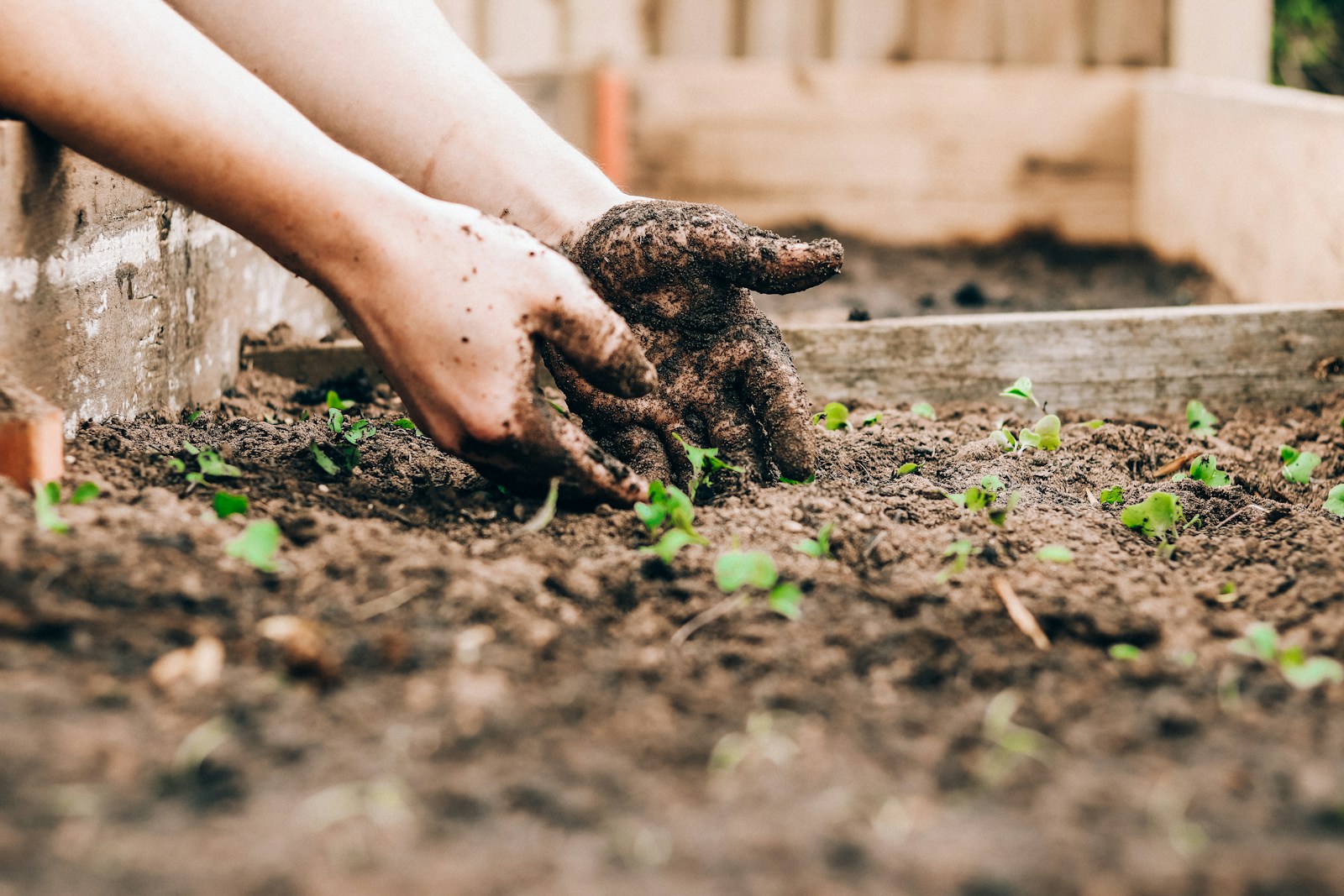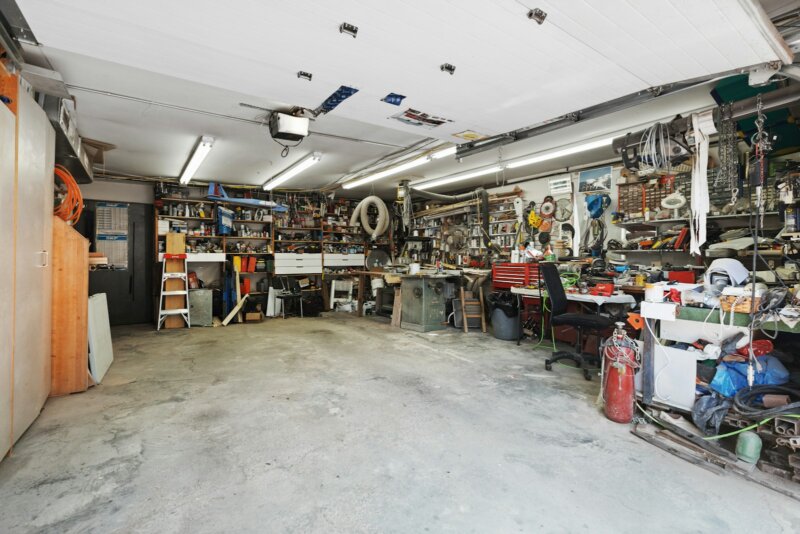Smells coming from kitchen scraps or a backyard pile can be fixed. With a few smart composting techniques, the process stays clean and simple. You can turn organic waste into rich soil without a stink.
This guide shows odor control for indoor composting and outdoor composting. You will find practical steps, quick checks, and beginner tips. Use what fits your space and habits.
Choosing the Right Composting Method
Pick a method that matches your space, routine, and goals. Each option helps with waste reduction and soil enrichment, and supports sustainable gardening at home.
Vermicomposting with Worm Bins
Vermicomposting means composting with worms. A species called Red Wiggler, or Eisenia fetida, eats food scraps and produces castings, which are a natural fertilizer.
Use a bin with a tight lid and drainage holes. Add bedding like shredded paper or cardboard. Keep a small air gap above the bedding for airflow, which is called aeration. Moisture should feel like a wrung-out sponge.
Worms prefer a pH between 6.0 and 7.0. pH is a measure of how acidic or basic the bin is. If the bin smells, add dry bedding, bury fresh scraps, and avoid overfeeding. Worm castings boost plant health and improve soil structure.
For setup tips or odor fixes, many beginners check guides from worm suppliers. Uncle Jim’s Worm Farm offers starter advice and common troubleshooting.
Prefer a sealed indoor option that accepts more kinds of food? Try Bokashi composting.
Bokashi Composting
Bokashi is an anaerobic method, which means it works without oxygen. It uses a special bran with helpful microbes to ferment kitchen scraps. This system accepts meat and dairy, which most other methods do not.
Place scraps in an airtight bucket and sprinkle Bokashi bran after each layer. Press down to remove air. Fermentation takes about 10 to 12 days. Drain the liquid, often called Bokashi tea, every few days. This limits odors and keeps microbes active.
A basic bucket costs around $50, and bran often runs about $14.95 per bag. When the batch is done, bury the contents in soil for two to four weeks, and keep it away from roots at first due to acidity. Many gardeners add fermented scraps to a regular, aerobic pile, which uses oxygen and breaks materials down faster.
Traditional Outdoor Composting
Outdoor composting can be a bin, a tumbler, or a simple pile. An 80-gallon, or 300 liter, bin works well for most homes. If you have lots of green waste, a three-bin system made from pallets keeps batches moving.
Hot composting uses heat and frequent turning. The Berkeley method can produce compost in about 18 days if managed closely. It can also kill some weed seeds and pathogens, which are harmful germs.
Static piles sit longer with little turning, sometimes taking a year or more. Trench composting means burying scraps right in the soil. Some yards even use outdoor worm bins for faster results.
Short on space? Micro-buckets handle small amounts of kitchen scraps. Finished compost can be soaked in water to make compost tea, a liquid feed for plants. Use safe brewing practices, and avoid foliar spraying on edible leaves without guidance.
Managing Odors in Composting
Odor control comes from balance, airflow, and moisture. A few small changes often fix smells fast.
Balance Green and Brown Materials
Greens add nitrogen. Browns add carbon. Microorganisms, tiny helpers like bacteria and fungi, need both to work well.
- Greens: fruit and veggie scraps, fresh grass clippings, coffee grounds, tea leaves, eggshells.
- Browns: dry leaves, shredded paper, paper towels, sawdust from untreated wood, cardboard.
Aim for about two parts brown to one part green by volume. Some people use a 50-50 mix with good results. If the pile smells or turns slimy, add more browns and mix. If it is dry or slow, add greens and a splash of water, then turn.
Biochar or a light sprinkle of wood ash can absorb odors. Biochar is a type of charcoal made for soil. Use small amounts to avoid raising pH too high.
Avoid Composting Meat and Dairy
Meat, fish, and dairy usually cause odors and draw pests. These materials break down slowly and can carry harmful microbes. Oily or greasy foods, bones, cheese, and pet waste create similar problems.
If you want to process cooked food or meat, use a Bokashi system. It handles these materials safely indoors. For outdoor piles and worm bins, stick with plant-based kitchen scraps for better odor control.
Use Activated Charcoal or Odor Absorbers
Activated charcoal has a porous surface that traps smelly gases like ammonia and hydrogen sulfide. Many kitchen compost bins include carbon filters for this reason.
Sealed caddies with filters work well in small homes and apartments. Replace filters on schedule, since they fill up over time. This simple fix keeps indoor air fresh while you collect daily scraps.
Indoor Composting Techniques
Indoor composting can be tidy and quick with a few habits. These steps keep odors down and fit tight spaces.
Freezing Kitchen Scraps
Freeze food scraps in resealable bags or containers. This stops rot and blocks fruit flies. Frozen scraps also break down faster later, since ice crystals tear cell walls.
This trick helps during winter or if the outdoor bin is far away. When ready, add the frozen scraps to the pile or worm bin. They will thaw and decompose quickly.
Using Sealed Compost Bins
Sealed bins with tight lids and carbon filters control odors well. Most use activated charcoal to trap smells while you gather organic waste over several days.
Moisture is key. Too wet, and scraps rot. Too dry, and decay slows. Open the lid now and then for air, then close it again. Empty and clean the bin on a set schedule.
Use the finished material for houseplants or balcony gardens. It cuts trash and feeds soil without chemical fertilizer in most cases.
Grinding Food Waste for Faster Decomposition
Smaller pieces decompose faster. Grinding or chopping increases surface area for microbes to work on. High-nitrogen items like greens and kitchen scraps benefit most from this step.
You can use a small food recycler or a basic chopper. Grinding is optional, but it speeds results, especially with large volumes of organic waste.
Outdoor Composting Tips
Outdoor composting turns yard waste and kitchen scraps into soil food. Use these habits to speed things up and avoid odors.
Regularly Turn the Pile
Turn the pile every three to four days for hot composting. This adds oxygen, which fuels aerobic decomposition. Aerobic means with air.
Frequent turning helps the pile reach and stay above 80 degrees Fahrenheit. That temperature range supports helpful microbes, reduces smells, and deters pests. Finished compost should look dark and crumbly, and smell earthy.
Check moisture with each turn. Aim for a wrung-out sponge feel. If you live in a dry area, keep a hose nearby for quick sprays.
Cover the Compost to Reduce Smells
Use a lid or tarp to manage moisture and odor. Covers keep rain from soaking the pile and stop the sun from drying it out.
A covered bin also blocks rodents and insects. This is useful in cities with active wildlife. Stable moisture and temperature lead to steadier decomposition and better compost.
Maintain Proper Moisture Levels
Moisture control prevents rotten smells and stalled piles. If it is too wet, the pile turns anaerobic and stinks. If it is too dry, microbes slow down.
Fix a wet pile with more browns like dry leaves or shredded paper. Fix a dry pile with greens and a light watering. Covered bins protect against heavy rain and help hold a steady moisture level.
What to Avoid in Composting
Good composting starts with the right inputs. Certain materials invite pests or cause odors, and some can spread disease.
Items That Attract Pests
- Meat, fish, bones, eggs, and dairy products.
- Fats, grease, and oily foods.
- Pet waste and cat litter.
- Large amounts of bread or grains if left uncovered.
- Cheese and other dairy items.
Keep outdoor food scraps covered so animals cannot reach them. Use plant-based organic waste for fewer pest issues.
Materials That Cause Odors
- Meat, dairy, fats, oils, and greasy leftovers.
- Pet waste and used cat litter.
- Too much citrus, which can raise acidity and smell.
- Onions, garlic, bones, processed foods, and most cooked food, except in Bokashi.
- Diseased plants, weed seeds, plastics, treated wood, coal ash, metal, and glass.
Large woody branches also slow the process unless cut small. Keeping these out makes fresher compost and fewer smells. If you are unsure about a material, leave it out or check a trusted extension guide.
Using Finished Compost
Finished compost feeds soil and helps plants thrive. Use it in gardens, raised beds, and containers.
Enriching Garden Soil
Mix 1 to 2 inches of compost into the top 6 inches of soil. This adds organic matter, improves water holding, and supports beneficial microorganisms.
Most gardens do not need chemical fertilizer when compost is used well. For seed starting, sieve compost and blend with coir or sand for a lighter mix.
If using municipal compost, let it rest before heavy use. Some batches may have higher salts that need time to mellow.
Mulching Around Plants
Spread a 4 inch layer around trees and shrubs, and 2 inches around garden plants. Keep mulch a few inches from stems to prevent rot and pests.
Compost mulch holds moisture, moderates temperature, and reduces weeds. For extra protection, layer compost with straw or leaves. Fall applications prepare beds for spring growth and better soil structure.
Bottom Line
Composting for beginners is a practical way to cut trash and build soil. Choose a method that fits your home and keep odors in check with balance, airflow, and moisture control. Indoors, use sealed bins and simple habits. Outdoors, turn, cover, and right-size the pile.
Small steps add up, and your plants will show the results. If you handle meat or pet waste, use safe systems and take care. For local rules or detailed safety guidance, check your city or a cooperative extension. Start today with a few kitchen scraps, then grow from there.







